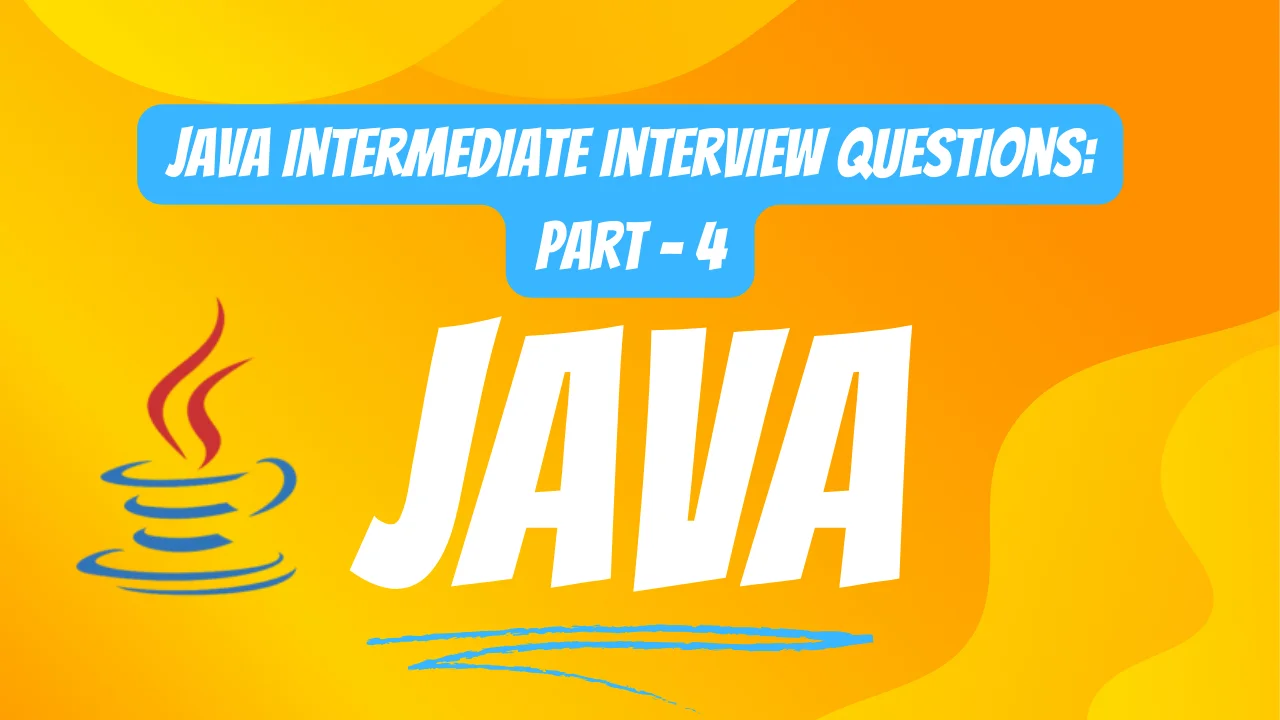
When an exception occurs in Java, it’s thrown by the method that encountered the error. If that method doesn’t handle the exception, it’s propagated up the call stack until it finds an appropriate catch block or reaches the top-level/default exception handler (catch block or finally block) in the program or thread.
Unhandled exceptions in Java can cause the program to terminate abruptly. When an exception is not caught or handled, it propagates up the call stack until it reaches the default exception handler. If there isn’t any appropriate handling mechanism, the program stops execution, and an error message describing the exception is displayed.
In Java, a try block can be followed by either a catch block, a finally block, or both. However, it’s not mandatory to have a catch block after a try block. If a finally block is present without a catch block, it handles cleanup or resource release operations after the execution of the try block, even if an exception occurs.
Yes, the finally block will execute even if there’s a return statement at the end of both the try and catch blocks. The finally block is guaranteed to execute before the method returns, allowing for cleanup or finalization operations, regardless of whether an exception is thrown or not.
Yes, a constructor in Java can call another constructor within the same class using the this() keyword. This is known as constructor chaining, allowing one constructor to invoke another constructor from the same class.
Arrays in Java store elements in contiguous memory locations, allowing direct access based on index positions. ArrayList, however, is implemented using a dynamically resizing array internally. It doesn’t require contiguous memory; instead, it dynamically allocates memory as needed, which can lead to non-contiguous memory allocation.
In Java, indexing begins at 0 due to historical and computational reasons. It’s a convention inherited from lower-level programming languages like C. The choice of starting from 0 simplifies pointer arithmetic and memory addressing while maintaining consistency and predictability in array operations.
The remove method is faster in a linked list compared to an array because, in a linked list, removing an element involves only updating the pointers or references of neighboring nodes. However, in an array, when an element is removed, all subsequent elements must be shifted to fill the gap created by the removal, which can be time-consuming, especially for large arrays.
In the List interface, there are multiple overloaded versions of the add() and addAll() methods. These methods differ in their parameters, allowing for flexibility in adding elements to a list.
These methods provide various ways to manipulate and add elements to a List.
An ArrayList dynamically grows its size by reallocating a larger internal array when it reaches its capacity. Initially, it allocates a certain capacity (default or specified) and when more elements are added beyond the capacity, it doubles the size of its internal array (grows by 50% in older Java versions) and copies the existing elements into the new larger array. This resizing operation allows the ArrayList to accommodate more elements efficiently.
mastering Java is a crucial step for freshers looking to excel in the competitive IT landscape. Our compilation of Java interview questions for freshers is designed to be a comprehensive guide, helping you prepare with confidence. Whether you’re just starting your career or aiming for new opportunities, a solid understanding of Java is a valuable asset.
Ready to take your Java skills to the next level? Explore our top-notch Java Training in Chennai. Our expert instructors and hands-on approach ensure that you not only ace interviews but also thrive in real-world scenarios. To kickstart your journey to Java excellence, contact us at +91 9159-333-334. Secure your future today with the best Java Training in Chennai. Don’t miss out on the chance to propel your career forward
Java Intermediate Interview Questions: Part- 1
3/165,Sumangali Second floor, Perumbakkam Main Rd, Medavakkam,
Chennai – 600100, Tamil Nadu.
Landmark – Opp to Canara Bank.
No 112/2, Door No 140/104, First Floor, Phase 1 Mount Poonamallee, Trunk Rd, Porur, Chennai, Tamil Nadu – 600116
Aimore Tech is one of the best software training institute in Chennai, provides job oriented IT courses with training and 100% placement assistance! Areas in Chennai which are nearer to us are Adambakkam, Adyar, Alandur, Besant Nagar, Chrompet, Guindy, Kelambakkam, Kottivakkam, Kovilambakkam, Medavakkam, Meenambakkam, Mudichur, Nanganallur, Navalur, Palavanthangal, Pallavaram, Pallikaranai, Perumbakkam, Perungalathur, Perungudi, Pozhichalur, Puzhuthivakkam, Selaiyur, Semmanjeri, Sholinganallur, Siruseri, Sithalapakkam, St. Thomas Mount, Tambaram, Tharamani, Thiruvanmiyur, Thoraipakkam, Ullagaram, Velachery.
Aimore Tech is one of the best Software Training institute in Chennai offers best IT Training Courses for Data Science, AWS, DevOps, Python, Selenium, Dot Net, Java with 100% placements assistance. In this regard, Aimore has an unmatched track record in helping young Candidates find their dream careers. Aimore Technologies are perfect partners for aspiring youngsters who dream of a career in the IT sector. We aim to redefine what it means to be the best software training institute in Chennai.
